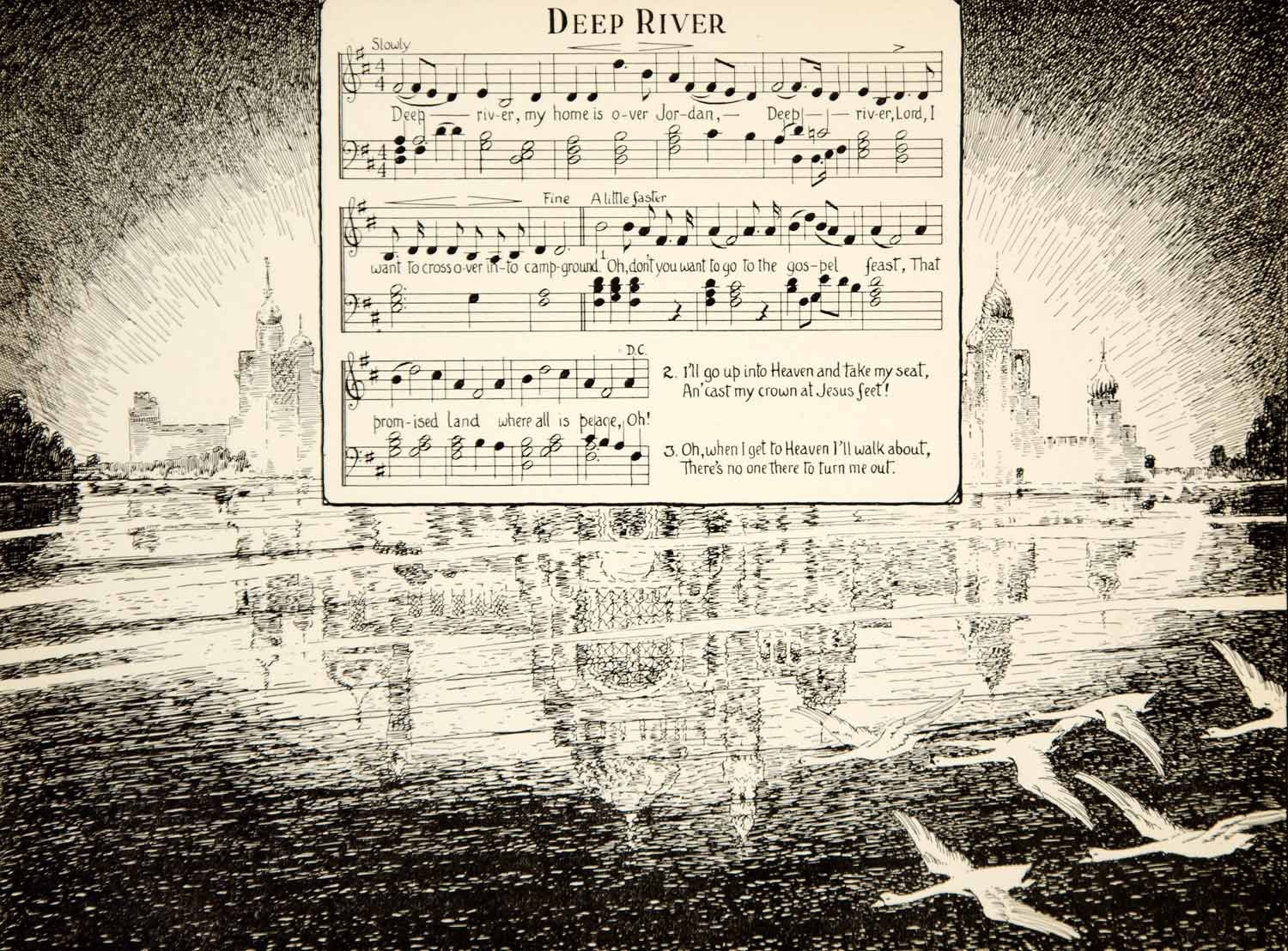A Legacy of Hope
by Phylis Vander Naald
Smiles spread across the soprano section as the singers congratulate themselves on maneuvering through an awkward transition in the Negro spiritual “Poor Man Lazarus.” They have rehearsed the song with its difficult harmonies only a few times. At the piano, director Kathryn Rayford’s face mirrors their satisfaction as she completes a short run of soprano measures to help the singers over the rough spots.
“All rrrrrright,” she says, but follows her praise with a warning that the instrumental assistance is about to end. For the sopranos, a capella factor in the spiritual tradition is about to kick in. “You ladies are on your own now,” Rayford says, shifting her fingers on the keyboard and nodding to the men in the back row. “I’m working for the tenors now.”
Rehearsals of The Negro Spiritual Choral Ensemble are aerobic exercises for Rayford. She moves many times from the piano bench to the director’s position in front of the choir and back again. Each new song she introduces requires a brief keyboard accompaniment in the first practice session. After the four vocal sections are familiar with their parts, the piano won’t be necessary. A pitch pipe is always within reach in Rayford’s pocket. She uses it to give the sopranos their starting note for familiar melodies. A bass singer, Walt Overton, gives his section the starting note at the same time on another pitch pipe. These are the only instruments heard during the ensembles performances.
The singers have become more confident about taking their cue from a pitch pipe since they began singing together about two years ago, Rayford says. “They’re all very good at catching on to this idea,” she adds. “At first they didn’t believe me when I told them we’d be singing without a piano.” Raised eyebrows eventually came down, but the singers’ enthusiasm is still high during rehearsals. “We’re very relaxed,” Rayford says. “If we sing a bunch of wrong notes in rehearsal, we all laugh about it. That way nobody is self-conscious about making mistakes.” The ensemble includes thirty singers, ranging in age from early 30s to 92. Rayford patterns their style on the Fisk University Jubilee Singers of Nashville, Tennessee, who introduced spirituals to the public in 1871. “We don’t have any trained voices here,” Rayford says. “This is a volunteer choir for anybody who wants to come and sing.”
Despite their inexperience, the group has garnered invitations to sing in several area churches, including a recent Lenten concert at Immanuel United Church Of Christ. The ensemble has also traveled to St. Louis and Kansas City for performances.
Members hope their influence will reach the younger generation, who could help carry on the spiritual tradition. Tenor Bill Shobe, a Sedalia police officer, acknowledges that spirituals are unfamiliar to most younger people, who favor current music and perhaps would rather avoid reminders of the slavery era. “I can visualize the music sometimes,” Shobe says. “You know where you’ve seen old movies of people working on the plantations and singing these songs while they work? I try to put myself there and try to sing that way, where you have one person humming a tune and then another joins in and another beside him. When you put it all together, it makes beautiful harmony.”
Catching the attention of young people is also Dorothy Kitchen’s dream for preserving the foundations of African-American music. She is historian for the group and sings alto. “We don’t want these songs to be lost,” Kitchen says. “They are a distinctly American contribution to the sacred music of the world.” At each concert she presents a brief history of spirituals, which spans the publication of nearly 6,000 songs. “Sometimes spirituals are confused with gospel music, but there’s a great difference,” Kitchen says. “Gospel has instrumental background and lots of hand clapping. The clapping can nearly drown out the words. You can hear the words clearly in spirituals. Each one has a point and a story to tell.”
Kitchen’s research doesn’t back away from the harsh aspects of slavery that generated the spirituals. “They speak of life and death, suffering and sorrow, love and judgment, grace and hope, justice and mercy,” she says. “It is a music created by people whose bodies may have been chained but whose spirits soared high.” Hope is the dominant emotion in the music. After each rehearsal the ensemble sings its theme song about how people can turn hopes and dreams into realities: “Reach out and touch somebody’s hand, make this world a better place…”

